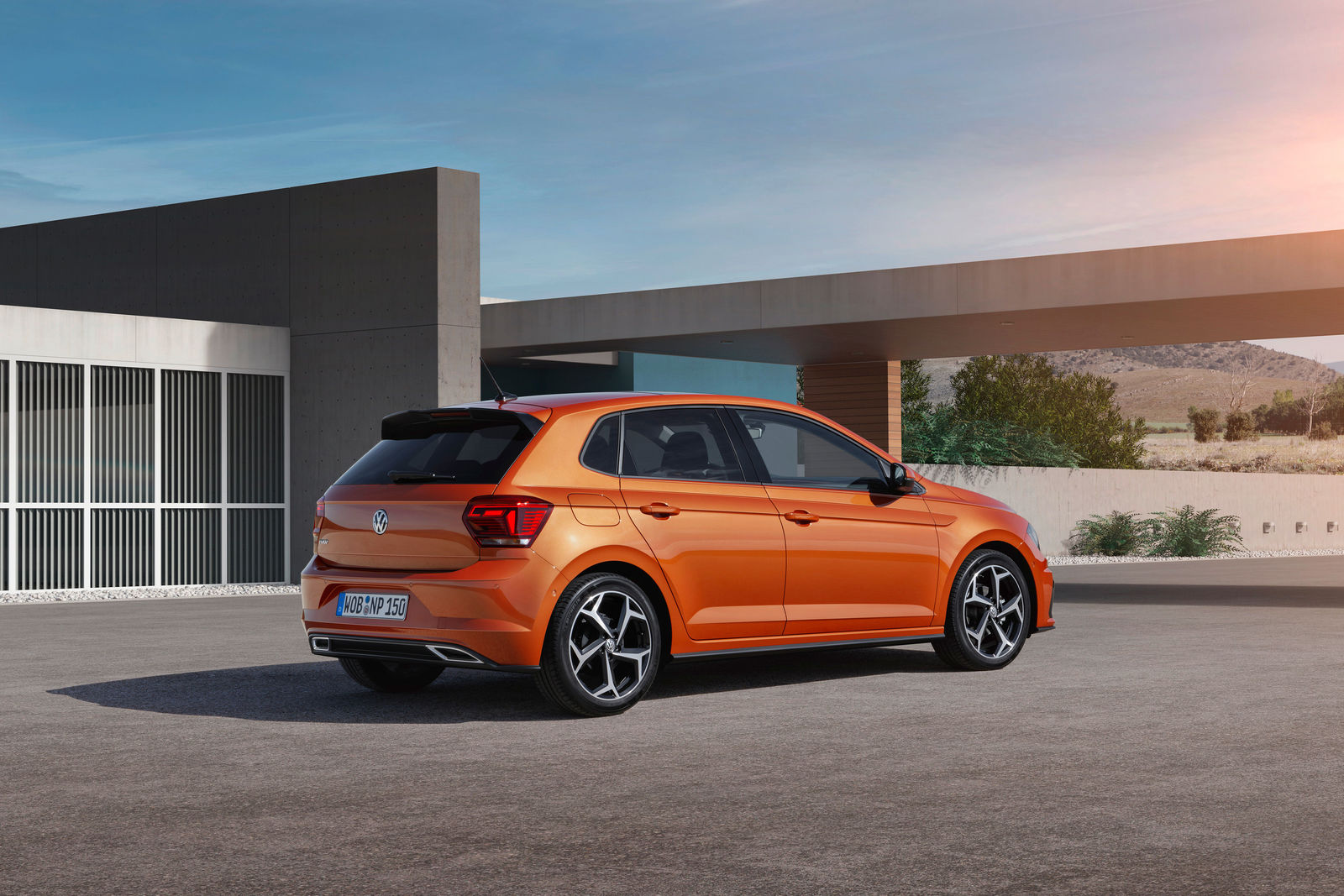First Polo based on the modular transverse matrix (MQB)
MQB A0 as the basis. Like the Golf, Touran, Tiguan, Passat and Arteon, the Polo is now also based on the modular transverse matrix (MQB). Here it is the A0 version adapted for particularly compact models. The MQB A0 has a whole armada of advantages. The compact proportions, which the design team also used as a starting point for a very dynamic look, immediately catch the eye. In addition, the technical advantages of the MQB can be found under the vehicle skin such as an optimised package, improved body stiffness, very good crash properties and an unchanged body weight – despite the greater size and enhanced safety features.
Torsionally stiffer and safer. Progress that has been achieved compared with the previous version can also be measured quantitatively. For instance, Volkswagen was able to improve the body stiffness of the fifth Polo generation from an already good 14,000 Nm/° to more than 18,000 Nm/°. At the same time, the new Polo effortlessly satisfies crash requirements such as those of these tests: Euro NCAP Front Wall 0°, Euro NCAP Side AEMDB and Euro NCAP Pillar 75° 32 km/h. Thanks to the use of MQB A0, comfort gains have also been made courtesy of the 92 mm longer wheelbase, optimised entry and exit for rear seating and overall package improvements. Nonetheless, all of these benefits have been achieved without any increase in body weight.
Avant-garde design conveys charisma and dynamism
Larger and sportier. The positive effects of the MQB A0 on the car's proportions and, in turn, on its design, are huge. The car has much more dynamic proportions and a significantly longer silhouette, because the wheelbase, exterior length and width have all grown while the car's height remains nearly identical. The design team took advantage of these realigned dimensions to put a sporty, powerful, fresh and masculine Polo onto wheels of up to 18 inches in size.
Simply impressive. The dynamic effects of the MQB A0 on the proportions are reflected in the Polo's new dimensions. The length of the compact Volkswagen has grown by 81 mm to 4,053 mm, and its wheelbase has also been lengthened by 94 mm to 2,564 mm. This means that the wheels are now positioned further to the front and rear, which also shortens the overhangs and gives the car a more powerful and sportier appearance. At the same time, the Polo is now 69 mm wider and has an overall width of 1,751 mm. Its height has been reduced by 7 mm to 1,446 mm.
Silhouette. The sixth generation Polo has become a more ‘masculine' car, which generates a unique charisma from all perspectives with its new expressive design. The following details – considered from top to bottom – define the Polo when it comes to its stretched silhouette. The roof line is longer and thereby more elegant; it transitions into a roof spoiler at the rear. A fine line on the side body runs parallel to the roof line, visually lowering the centre of gravity. Key detailing of the Polo includes its long line of side windows – the Polo is the only Volkswagen to have a window line that terminates in a rise at both front and rear. This contour with the window integrated into the C-pillar was further developed and sharpened. The C-pillar in particular, which is now designed to reach forward more and is precisely sculpted, makes the car dynamic and appear to lunge forward, even when stationary.
Arrow-shaped double line. Emerging from the straight line of the window shoulder is another line that runs towards the front and into the headlights, making the Polo appear very long. Other new and important design features follow beneath this window line. An arrow-shaped double line, which is known as the tornado line, is a new design feature defining the Polo. The surface of this three-dimensional tornado line is – in the style of a shoulder section – slightly flared, and it finishes with a sharp downward undercut. The upper of these two double lines starts in the C-pillar and visually shoots forward into the front wings. The second, lower line, on the other hand, forms the undercut. It develops from the 3D graphic of the tail lights and also extends forward into the front wings, where it rises slightly, meeting the upper line.
Front end. The front end is designed to be much more emotional, dominant and sportier than that of the previous model. The headlights are now also available with LED technology. Together with the radiator grille, they form the new 'face' of the Polo that extends across the entire vehicle width. Self-confident: a bumper which also emphasises vehicle width in its design elements. More pronounced contours: the bonnet which now extends far downward into the 'face'. The bumper has also been completely redesigned. The large glass surfaces of the fog lights and turn signal lights are eye-catching from the side of the car. They terminate outwards in three-dimensionally contoured corners. Between them there are two air intakes: a V-shaped one in the middle, and a narrow second intake that extends across the entire width.
Rear. The Polo's rear bodywork design already made it an inductee to the Automotive Hall of Fame by the time the fifth generation made its debut. Now the clean, very well-balanced overall architecture has been significantly further developed and – like the sides and front end – made even more precise and sharp. Powerful: the broader shoulder section. Striking: the new trapezoidal-shaped tail lights that are worked into the shoulder section (optionally available as LED tail light clusters for the first time). Typical for the Polo: a horizontal line beneath the tail lights on the rear hatch, which now flows into the bumper and also underscores the Polo's width from this perspective. Distinctive: the new diffuser that is integrated into the bumper.
